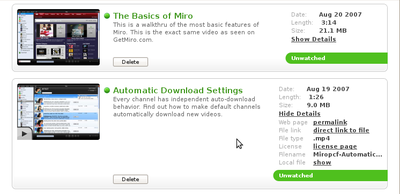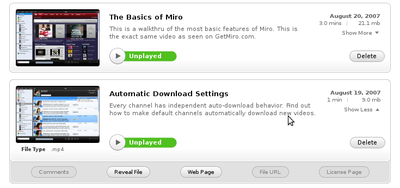Miro needs your translation help!
We've been pushing hard on Miro 2.0 development for a long time now. So far I've avoided making release date predictions, but looking at the Bugzilla queue and the rate at which we're finishing things, we're probably looking at a Miro 2.0 release in the next 3 or 4 weeks.
One thing that we desperately need help with is translation work. All translation work is done in Launchpad at https://translations.launchpad.net/democracy/trunk/+pots/democracyplayer. You can see the status of translations there, too. Right now it looks something like this:
language # untranslated strings -------- ---------------------- German 0 (Go German!) Slovenian 28 Polish 39 Swedish 58 French 66
The rest of the languages have more than 100 untranslated strings.
I want to thank Lukasz, who's been working on the Polish translations, for helping an enormous amount in the last few weeks. He's identified and helped me fix a bunch of problems with the strings and also worked to make the strings easier to translate. Thank you!
If you can translate strings and/or have done Launchpad translations before, we need your help. We've got a 3 or 4 week window between now (January 22nd 2009) and a release. It's not a lot of time, but hopefully it's enough time for us all to get translations into a better state.
If you have any questions or find any problems, let me know.

